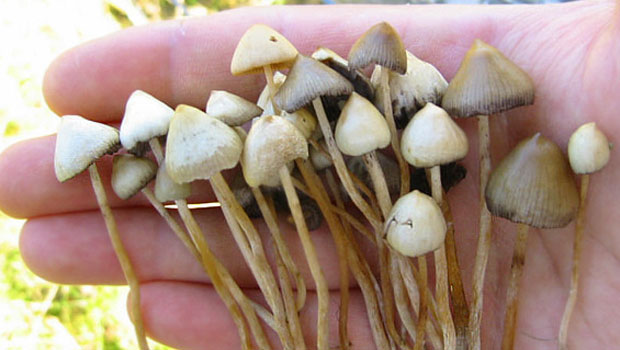The Brain's Response to Methamphetamine
Posted on May 26, 2020
Adapted from: Mind Over Matter Methamphetamine Series
National Institute on Drug Abuse · National Institutes of Health
 “Speed”, “meth”, “chalk”, “crystal”, “ice”, and “glass” are all names for the drug methamphetamine. Methamphetamine comes in many different forms and is snorted, swallowed, injected, or smoked. Smoking forms known as "ice" or "crystal," are named so due to their appearance.
“Speed”, “meth”, “chalk”, “crystal”, “ice”, and “glass” are all names for the drug methamphetamine. Methamphetamine comes in many different forms and is snorted, swallowed, injected, or smoked. Smoking forms known as "ice" or "crystal," are named so due to their appearance.
Methamphetamine is a powerful drug. It changes how the brain works. It also speeds up many functions in the body. Methamphetamine has a chemical structure that is similar to another drug called amphetamine. Methamphetamine can be harmful, including causing an inability to sleep, paranoia, aggressiveness, and hallucinations.
Your brain is made up of billions of nerve cells (or neurons). Neurons come in all shapes and sizes, but most have three important parts: a cell body that contains the nucleus and directs the activities of the neuron; dendrites, short fibers that receive messages from other neurons and relay them to the cell body; and an axon, a long single fiber that carries messages from the cell body to dendrites of other neurons.
Axons of one neuron and the dendrites of a neighboring neuron are located very close to each other, but they don't actually touch. Therefore, to communicate with each other they use chemical messengers known as neurotransmitters. When one neuron wants to send a message to another neuron it releases a neurotransmitter from its axon into the small space that separates the two neurons. This space is called a synapse. The neurotransmitter crosses the synapse and attaches to specific places on the dendrites of the neighboring neuron called receptors. Once the neurotransmitter has relayed its message, it is either destroyed or taken back up into the first neuron where it is recycled for use again.
There are many different neurotransmitters, but the one that is most affected by methamphetamine is dopamine. Dopamine is sometimes called the pleasure neurotransmitter because it helps you feel good from things like playing soccer, eating a big piece of chocolate cake, or riding a roller coaster. When something pleasurable happens, certain axons release lots of dopamine. The dopamine attaches to receptors on dendrites of neighboring neurons and passes on the pleasure message. This process is stopped when dopamine is released from the receptors and pumped back into the neuron that released it where it is stored for later use.
Usually neurons recycle dopamine, but methamphetamine is able to fool neurons accepting it just like they would to dopamine. Once inside a neuron, methamphetamine causes that neuron to release lots of dopamine. All this dopamine causes the person to feel an extra sense of pleasure that can last all day. But eventually these pleasurable effects stop. They are followed by unpleasant feelings called a "crash" or a coming down or depressive state that often leads a person to use more of the drug. Eventually, if a person continues to use methamphetamine, they will have difficulty feeling pleasure from anything. Imagine no longer enjoying your favorite food or an afternoon with your friends.
Methamphetamine has many negative affects
Because it is similar to dopamine, methamphetamine can change the function of any neuron that contains dopamine. If this weren't enough, methamphetamine can also affect neurons that contain two other neurotransmitters called serotonin and norepinephrine. This means that methamphetamine can change how many things in the brain and the body work. Even small amounts of methamphetamine can cause a person to be more awake and active, lose their appetite, and become irritable and aggressive.
Methamphetamine also causes an increase in blood pressure and heart rate.
What happens if a person uses methamphetamine for a long time?
Scientists are using brain imaging techniques, like positron emission tomography (called PET for short), to study the brains of human methamphetamine users. They have discovered that even three years after long-time methamphetamine users had quit using the drug, their dopamine neurons were still damaged. Scientists don't know yet whether this damage is permanent, but this research shows that changes in the brain from methamphetamine use can last a long time. Research with animals has shown that the drug methamphetamine can also damage neurons that contain serotonin. This damage also continues long after the drug use has stopped.
These changes in dopamine and serotonin neurons may explain some of the affects of methamphetamine. If a person uses methamphetamine for a long time, they may become paranoid. They may also hear and see things that aren't there. These are called hallucinations. Because methamphetamine causes high increases in blood pressure, someone using for a long time may also have permanent damage to blood vessels in the brain. This can lead to strokes caused by bleeding in the brain.
The Search Continues
Researchers are only beginning to understand how methamphetamine acts within the brain and body. When more is learned about the cause and affect of methamphetamines, researchers may be able to develop treatments that prevent or reverse the damage caused by this drug.
For printed copies of this publication contact:
National Clearinghouse for Alcohol and Drug Information
P.O. Box 2345
Rockville, MD 20847
1-800-729-6686
"Mind Over Matter" is produced by the National Institute on Drug Abuse, National Institutes of Health. These materials are in the public domain and may be reproduced without permission. Citation of the source is appreciated. NIH Publication No.00-4394. Printed 2000
"Rural areas struggle with epidemic of meth addicts--Washington had second-most lab seizures in nation, feds say" (article by Hal Bernton, Seattle Times staff reporter, September 9, 2001)
(Methamphetamine) "...is a stimulant, once offered to World War II soldiers to keep them alert in combat. It was embraced by '60s motorcycle gangs, who marketed it as speed. In small amounts--and in pharmaceutically refined form--it has prescribed uses to treat attention-deficit disorder, narcolepsy and obesity.
"But the home-cooked meth, sometimes rife with impurities, is consumed in prodigious amounts by the addicts, and casual use can quickly transform to addiction. It's a cheap high, with a line of meth--enough to produce a high for four to six hours--often selling for $15 to $20 per “hit” or use.
"Meth "tweakers" may binge for days or even weeks. They forgo sleep and food, and often become skittish, irritable or paranoid. Their teeth rot. And they often lose tremendous amounts of weight.
"Studies indicate that meth use also does less-visible damage. According to the National Institute on Drug Abuse, meth attacks the nerve endings of brain cells containing dopamine, a chemical messenger that plays a role in movement and pleasure. "Human-brain imaging suggests that the damage persists for at least three years after people quit the drug and is similar but less extensive than that caused by Parkinson's disease...."
Methamphetamine Treatment Outcomes
A study conducted as part of the Centers for Substance Abuse Treatment--Methamphetamine Treatment Project-- found that half of the participants resumed methamphetamine use. 36% of these within six months following treatment, and 15 percent more within seven to 19 months. [Webmaster's interpretation: Half of the participants stayed drug free.]
Predictors of relapse were short length of treatment, older age of first substance use, involvement in selling methamphetamine, and previous treatment experience. [Brecht, Von Mayrhauser & Anglin (2001, in press). Predictors of relapse after treatment for methamphetamine use. Journal of Psychoactive Drugs.].
SEE ALSO:
More How Drugs and Alcohol Affect the Brain and Body
Sexual Bias Articles
Race Relations Articles
Mental Health Articles
WA. Counselor Directory: find a therapist near you
How helpful is this web page to you?
(and how can we can improve this page for you?)
not helpful
very helpful
Other Articles
What is PTSD? Cognitive Behavioral Therapy for Post-Traumatic Stress Disorder:
Is There a Successful PTSD Treatment?
You wake from a nightmare sweating or shaking or screaming. Startled by an unexpected sound or touch, you nearly jump out of your skin. You try to shut out feelings about that awful thing that happened to yo... read more
The Brain's Response to Hallucinogens
Hallucinogens --LSD (acid), MDMA (an amphetamine called ecstasy), PCP (often called angel dust), and Diviners Mint. Adapted from: Mind Over Matter Hallucinogens Series National Institute on D... read more
The Brain's Response to Opiates
Mind Over Matter Opiates Series National Institute on Drug Abuse · National Institutes of Health If you've ever seen "The Wizard of Oz," then you've seen the poppy plant -... read more
The Brain's Response to Stimulants
Stimulants --caffeine, cocaine, crack, amphetamines, methamphtamine (crank). Mind Over Matter Stimulants Series National Institute on Drug Abuse · National Institutes of Health... read more




